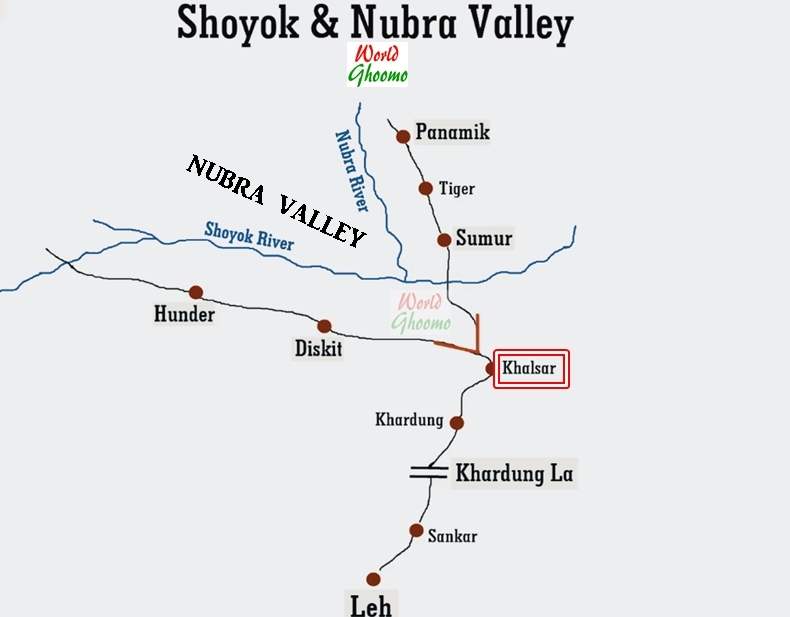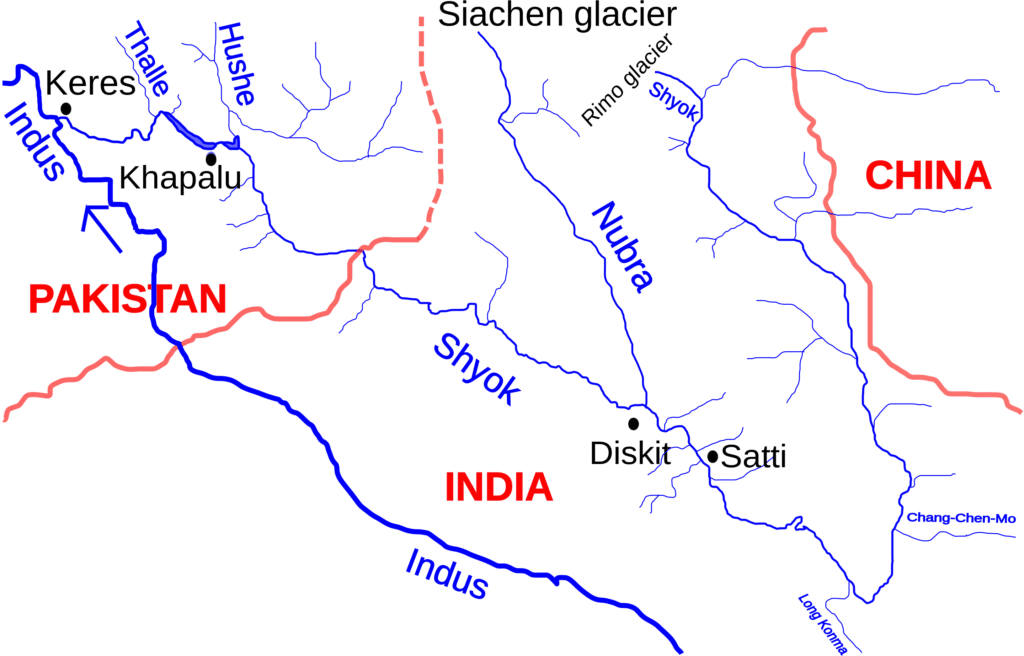Q. With reference to Ocean Mean Temperature (OMT), which of the following statements is/are correct?
- OMT is measured up to a depth of 26°C isotherm which is 129 meters in the south-western Indian Ocean during January – March.
- OMT collected during January March can be used in assessing whether the amount of rainfall in monsoon will be less or more than a certain long-term mean.
Select the correct answer using the code given below
a) 1 only
b) 2 only
c) Both 1 and 2
d) Neither 1 nor 2
Answer: b) 2 only
Notes:
- Ocean heat content (OHC) and Ocean Mean Temperature (OMT) are important climatic parameters required for atmospheric and oceanic studies like cyclone and monsoon predictions and ocean heat transport estimations.
- Sea surface temperature (SST) is routinely used for predicting whether the total amount of rainfall that India receives during the monsoon season will be less or more than the long-term mean of 887.5 mm.
- Now, scientists from Pune’s Indian Institute of Tropical Meteorology (IITM) find that ocean means temperature (OMT) that has a better ability to predict this than the sea surface temperature.
- Compared with SST which has a 60% success rate of predicting the Indian summer monsoon, OMT has an 80% success rate.
- The SST is restricted to a few millimeters of the top ocean layer and is largely influenced by strong winds, evaporation, or thick clouds.
- In contrast, OMT, which is measured up to a depth of 26 degrees isotherm, is more stable and consistent, and the spatial spread is also less.
- The 26 degrees isotherm is seen at depths varying from 50–100 meters.
- During January–March, the mean 26 degrees C isotherm depth in the Southwestern Indian Ocean is 59 meters.
Q. Consider the following statements:
- Jet streams occur in the Northern Hemisphere only.
- Only some cyclones develop an eye.
- The temperature inside the eye of a cyclone is nearly 10 C lesser than that of the surroundings.
Which of the statements given above is/are correct:
a) 1 only
b) 2 and 3 only
c) 2 only
d) 1 and 3 only
Answer: c) 2 only
Notes:
Jet Stream
- Jet streams occur in both the Northern and Southern Hemispheres.
- Jet streams are the strong air streams present in the upper troposphere.
- They are relatively narrow belts of swift-moving winds having velocity in the range of 100km/hr to 900km/hr.
- Jet streams follow curved and meandering path and such path is because of Coriolis effect
- And due to the tendency of large scale system to conserve the angular momentum.
- They are very strong winds.
Extra-tropical cyclones
- Extra-tropical cyclones may not always have an eye, whereas mostly mature storms have well-developed eyes.
- Rapidly intensifying storms may develop an extremely small, clear, and circular eye, sometimes referred to as a pinhole eye.
- It is warmer and not colder inside the eye of the tropical cyclone.
- The warmer temperature is what drives the storm.
- Conditions to form tropical cyclone
- Large sea surface with a temperature higher than 27° C.
- Presence of the Coriolis force enough to create a cyclonic vortex.
- Small variations in the vertical wind speed.
- A pre-existing weak low-pressure area or low-level-cyclonic circulation.
- Upper divergence above the sea level system.
Q. Consider the following minerals:
- Bentonite
- Chromite
- Kyanite
- Sillimanite
In India, which of the above is/are officially designated as major minerals?
a) 1 and 2 only
b) 4 only
c) 1 and 3 only
d) 2, 3 and 4 only
Answer: d) 2, 3 and 4 only
Notes:
- As per Govt. of India Notification S.O. 423(E) dated 10th February 2015 Bentonite has been declared as ‘Minor Mineral’.
- The Central Government has declared the following minerals as minor minerals:
- Boulder, shingle, chalcedony pebbles used for ball mill purposes only, lime shell, kankar.
- And limestone used in kilns for the manufacture of lime used as a building material.
- Murrum, brick-earth, fuller’s earth, bentonite, road metal, reh-matti.
- Slate and shale when used for building material, marble, stone used for making household utensils.
- Quartzite and sandstone when used for purposes of building or for making road metal and household utensils, saltpeter, and ordinary earth
- Used or filling or leveling purposes in construction or embankments, roads, railways, building.
- Bentonite is essentially a highly plastic clay containing not less than 85% clay mineral, montmorillonite.
- Chromite (Cr) is the single commercially viable ore of chromium which is chemically known as iron chromium oxide (Fe.Cr2O4).
- Kyanite, Sillimanite, and alusite are anhydrous aluminosilicate minerals that have the same chemical formula Al2O3 but differ in the crystal structure and physical properties.
Q. Siachen Glacier is situated to the
a) East of Aksai Chin
b) East of Leh
c) North of Gilgit
d) North of Nubra Valley
Answer: d) North of Nubra Valley
Siachen Glacier
- The Siachen Glacier is part of Ladakh, which has now been converted into a Union Territory. It is located in the eastern Karakoram range in the Himalayan mountains.
- It lies to the south of the great drainage divide that separates the Eurasian Plate from the Indian subcontinent in the glaciated portion of the Karakoram. Hence, it is also called the “Third Pole”.
Nubra Valley
- The Nubra Valley acts as the gateway to the strategically important Siachen Glacier and Karakoram Pass.
- The Karakoram Pass on the northwest side connects the valley with Xinjiang, China.
- The Nubra River is a river in the Nubra Valley of Ladakh in India.
- It is a tributary of the Shyok River (a part of the Indus River system) and originates from the Siachen Glacier.


Q. Consider the following pairs–
River – Flows into
- Mekong — Andaman Sea
- Thames — Irish Sea
- Volga — Caspian Sea
- Zambezi — Indian Ocean
Which of the pairs given above is/are correctly matched?
a) 1 and 2 only
b) 3 only
c) 3 and 4 only
d) 1, 2 and 4 only
Answer: c) 3 and 4 only
Notes:
- Four major rivers flow into the Irish Sea, the River Clyde in Scotland, the River Dee in Wales, the River Liffey in the Republic of Ireland, and the River Mersey in England. While Thames river flows into the north sea.
- Volga River, Terek River, Ural River, and Mtkvari River flows into the Caspian Sea.
- Mekong River drains into the South China Sea. It is the 11th largest river of the world and its length is 4880 km. It flows through China, Myanmar, Thailand, Laos, Cambodia, and Vietnam.
- The Zambezi, Ganges-Brahmaputra, Indus, Jubba, and Murray rivers and the Shatt al-Arab, Wadi Ad Dawasir, and Limpopo rivers, etc. drain into the Indian Ocean.
Must Read: Important Rivers of the World
